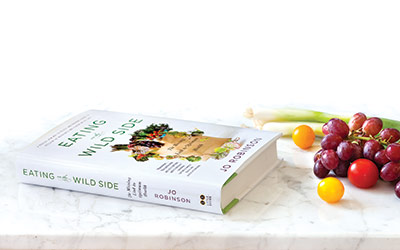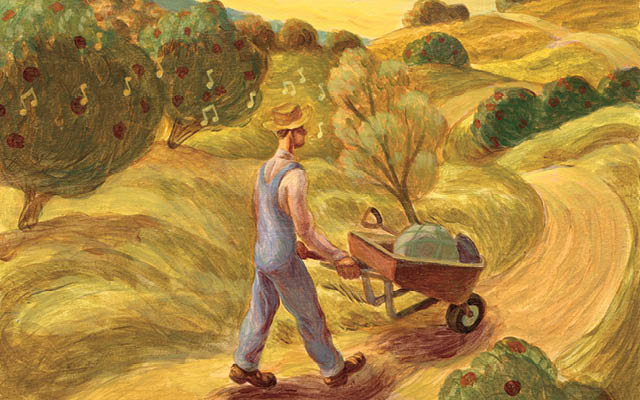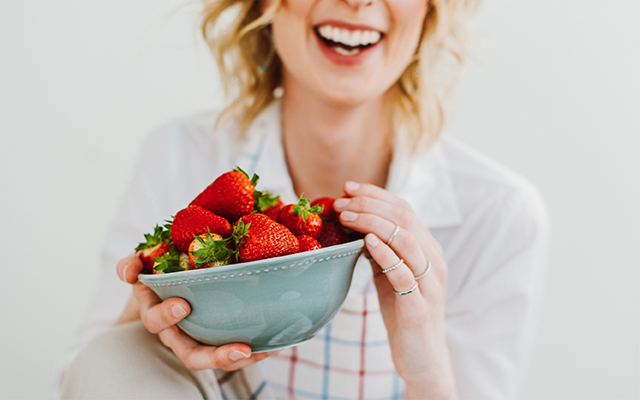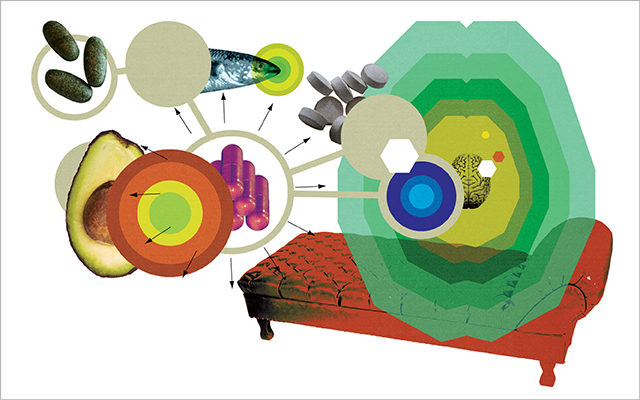Even those who have tasted the wonders of a fresh-from-the-garden tomato might be surprised to learn how modern fruits and vegetables compare with their wilder glory days. In Eating on the Wild Side: The Missing Link to Optimum Health, journalist and food activist Jo Robinson reveals just how much thousands of years of plant domestication have diminished the nutritional landscape.
Consider the large, sweet apples in American markets, which are the product of centuries of breeding to make them easier to store, ship, and eat. Today they barely resemble the small, sour, nutritionally dense wild apples like the Sikkim apple that still grows in Nepal.
And the nutritional value of that ancient, tiny apple eclipses its larger contemporary. Ounce for ounce, the Sikkim, which weighs only half a gram (five can fit in a teaspoon), has more than 100 times the phytonutrients of a Golden Delicious. What’s more, Robinson writes, the Golden Delicious has been bred to be so sweet that it can raise triglyceride levels and LDL cholesterol in those who eat the proverbial apple a day.
Robinson’s book doesn’t abandon readers to their diminished nutritional inheritance, however. Along with agricultural history, it offers clever shortcuts for getting the most out of what’s commonly available in supermarkets. For example, richly hued vegetables and fruits (purples, reds, and dark greens) typically signal more antioxidants, as do darker leaves and more astringent flavors. But even these rules have exceptions. One such case is white-fleshed peaches, which deliver six times the antioxidants of yellow ones. As such, Robinson recommends shopping with a detailed list rather than trying to commit all the details to memory.
She also offers advice on how to protect nutrients during storage and preparation. Broccoli kept in a pinpricked plastic bag in the crisper, for example, maintains twice the antioxidants of broccoli stored naked or sealed tightly in a plastic bag. And while many fruits are best eaten fresh, some, like tomatoes, become more nutritious when cooked, since heat increases tomatoes’ lycopene. Garlic, known for its cancer-fighting, blood-thinning properties, loses these qualities when cooked — unless it rests for 10 minutes after having been chopped.
Like any good food activist, Robinson encourages readers to purchase in-season produce, get to know local farmers, and try home gardening. But even if you stick with conventional supermarkets, Eating on the Wild Side provides simple, savvy tricks for becoming a healthier eater.
Q&A With Jo Robinson
Jo Robinson is an investigative journalist who has spent 10 years tracing the agricultural and nutritional history of present-day fruits and vegetables. The culmination of her research, Eating on the Wild Side, has become a New York Times bestseller.
Experience Life| What inspired you to investigate wild edible plants?
Jo Robinson| I had a hypothesis that the food we consumed before we started growing our own food 12,000 years ago would be better for us than the food in our supermarkets. We humans are very clever but tend to change things without having enough wisdom. This is exactly what happened with our food, starting 400 generations ago. Once we turned our backs on our wild diet and started growing crops based on what we thought looked better or tasted better, we got ourselves into trouble.
EL| Your book shows that chemical compounds found in many edible plants have demonstrable abilities to lower blood pressure, reverse age-related memory loss, and even kill cancer cells. What effect do you expect these findings to have on the way people eat?
JR| What I’m expecting to see — and have begun to see already — is that consumers are taking it upon themselves to search for the more nutritionally dense varieties of fruits and vegetables at supermarkets and farmers’ markets. People with gardens are growing new varieties. I see this as a groundswell, starting with people who are committed to nutrition and health and good-tasting foods, and gradually filtering down to the mainstream.
EL| What are some discoveries you’ve made about modern produce that you find most exciting?
JR| I think some of the most exciting news is that there are vast nutritional differences between varieties of the very same fruit or vegetable. Look at onions: A really bold-tasting onion has eight times the antioxidants of a sweet onion. You may choose a sweet onion to eat raw or put on your hamburger, but even the boldest-tasting onion will be very sweet when cooked just five to 10 minutes. So if you’re cooking, go with the bold-tasting onion varieties.
EL| You note that more bitter varieties tend to be best for us. Why are we predisposed to prefer sweet-tasting produce like apples and peas?
JR| Our bodies are programmed to survive in the wilderness, where the foods we require to fuel our bodies — the sugars, starches, and oils — are rare. We would not have survived if our brains didn’t give us a blast of feel-good chemicals like dopamine every time we eat them. But in our cleverness, we’ve made our food very high in these things, and at the same time we’ve reduced our physical activity.
Many of us are just not going to eat really bitter foods — we’re too coddled for that. So I tell people to eat anything purple — purple carrots, purple broccoli, purple corn, purple potatoes. They tend to be sweeter without being high-glycemic, and they’re all richer in antioxidants. Berries are another good example. They contain phytonutrients that have been shown to reduce the risk of cancer, cardiovascular disease, obesity, and dementia. And they’re nice and sweet.
EL| How has your diet changed since you began this research?
JR| Everything about the way I eat, shop, and grow vegetables has changed. I’ve been researching for 10 years and have read more than 6,000 studies. I now eat fabulously delicious and nutritious foods, and I am getting healthier as I age in measurable ways. My cholesterol and blood pressure are better now when I’m in my mid-60s than they were when I was in my 40s. I love what I eat. What’s not to like?




This Post Has 0 Comments